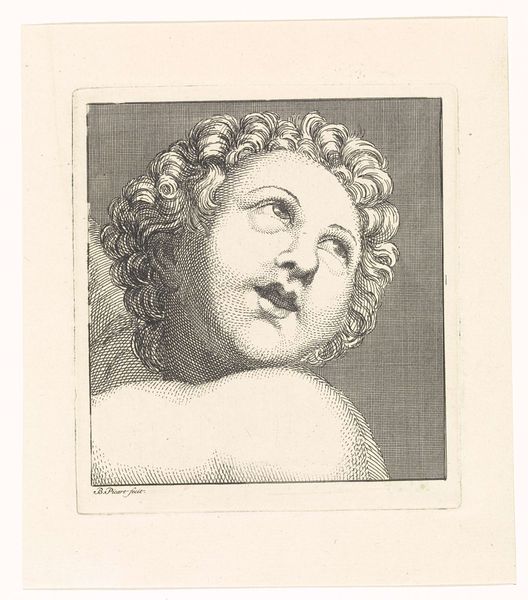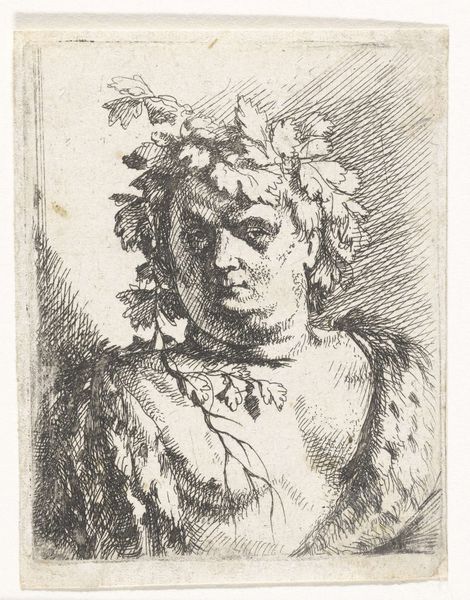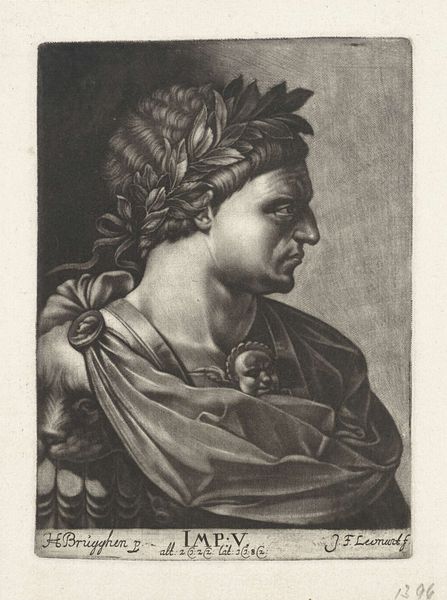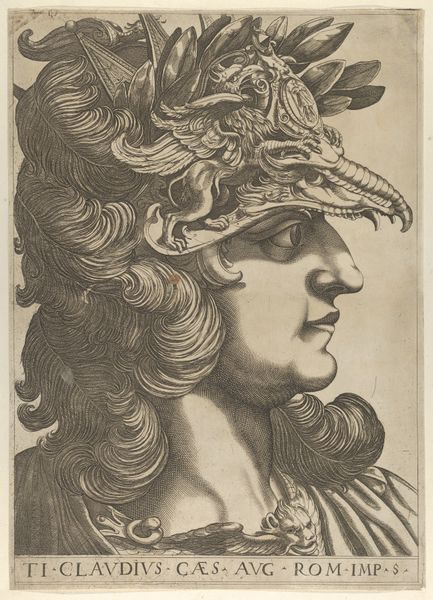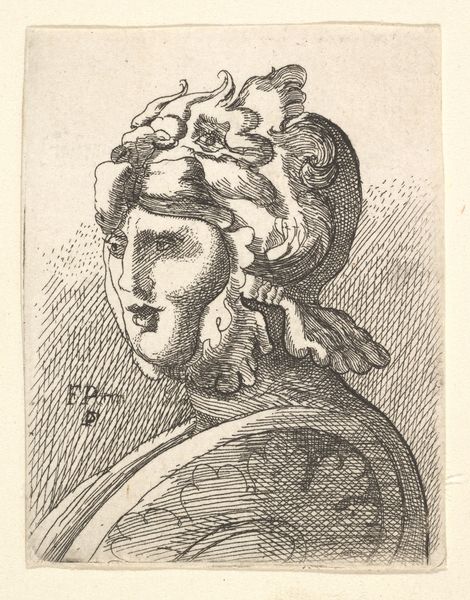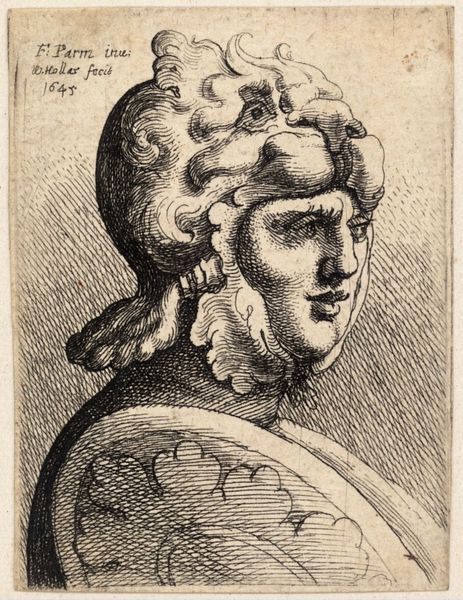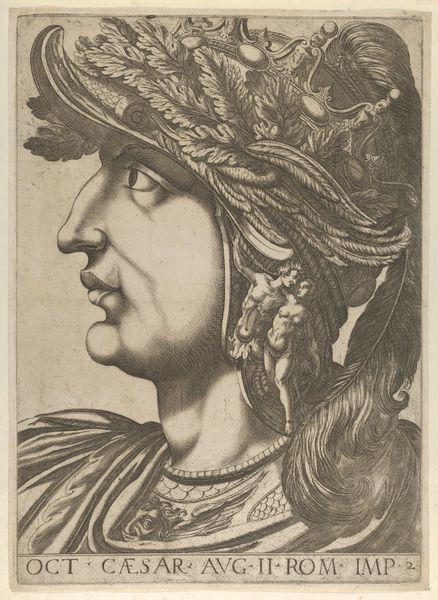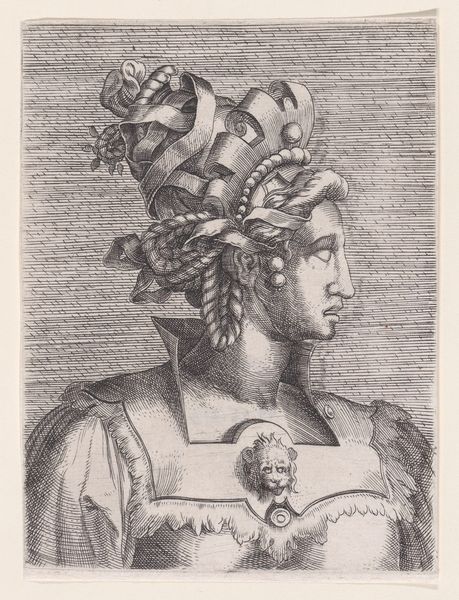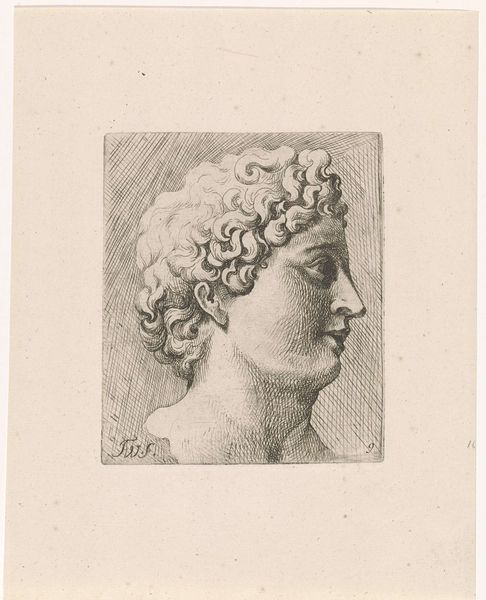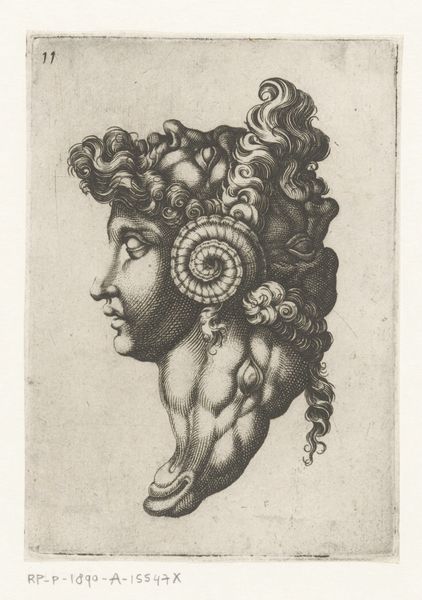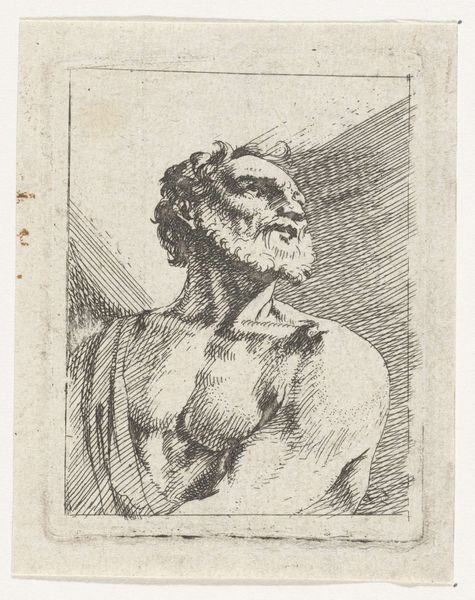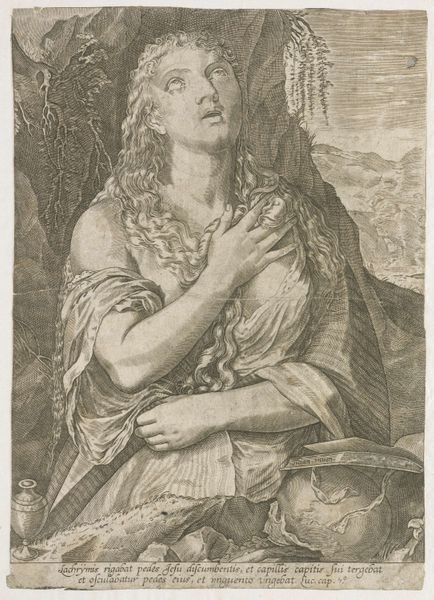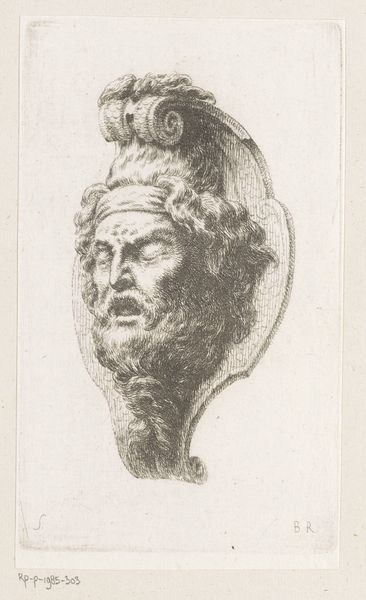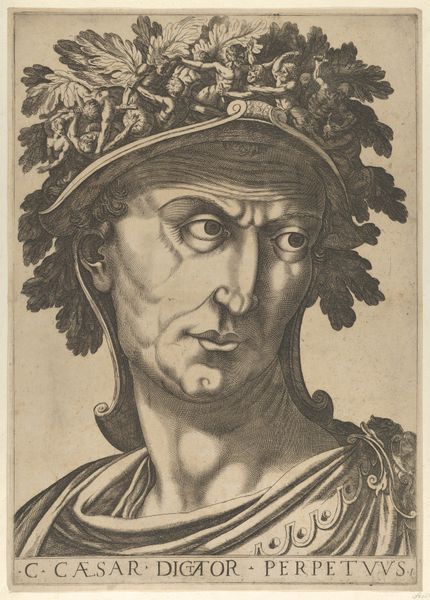
engraving
#
portrait
#
allegory
#
baroque
#
old engraving style
#
figuration
#
history-painting
#
engraving
Dimensions: height 79 mm, width 54 mm
Copyright: Rijks Museum: Open Domain
Curator: Let’s turn our attention to this intriguing engraving, "Bacchus," created sometime between 1650 and 1700 by the artist known only as Monogrammist IF. It offers a rather intense portrayal of the Roman god. Editor: My immediate reaction? He looks less like the joyous god of wine and more like a Roman emperor who's had a particularly rough night. The detail, particularly in the rendering of his skin and that crown of grapes, is just remarkable for an engraving. Curator: Indeed. The baroque era saw a fascination with portraying figures from classical mythology, and Bacchus, or Dionysus to the Greeks, was a popular choice. This engraving fits within the period's penchant for drama and detailed figuration. What do you make of the fact he's presented almost as a portrait? Editor: I think the choice to frame him like a portrait speaks volumes about power dynamics. It’s fascinating how this "portrait" almost satirizes the very idea of the divine right of kings, showing Bacchus, the god of freedom and ecstasy, as kind of jowly and, dare I say, burdened. I feel it’s pushing against the concept of idealized leadership in the time of emerging democracies. Curator: That’s an insightful reading. The symbolic weight here is potent. Beyond the grapes, take in the fur draped across his shoulders, a conventional symbol of Bacchus, harking back to the rituals associated with the god. Considering the time frame, post the reformation period, I'm also wondering about the imagery, its potential resonance, or subversion against religious structures that suppressed ecstasy and expression. Editor: I agree. And to further your point about ecstasy suppression, it can't be ignored the rise of Puritanism. Maybe this image served to provoke those in power, an artist standing against those rigid moral codes of conduct? Art can really be used as a weapon against control and, ultimately, influence society's way of thinking. Curator: That makes me look differently at the intentional crudeness of line around the eyes, nose, and mouth. There’s a realism here. The artist is not glorifying a god, as previously agreed, but is showing a figure perhaps wearied and weighed down. He shows not just the celebratory figure of Bacchus, but the morning after. A figure to pity, not adore. Editor: It completely flips expectations, doesn't it? This little engraving, barely a handful of inches, packs such a rebellious punch. The beauty and brilliance really reside in how such a historic representation can remain timely and applicable to ongoing questions regarding how art can be political, too. Curator: It does make you think about how images and power play can collide across centuries, doesn't it? This piece definitely underscores art's enduring capability to question even those narratives which appear to be firmly settled.
Comments
No comments
Be the first to comment and join the conversation on the ultimate creative platform.
